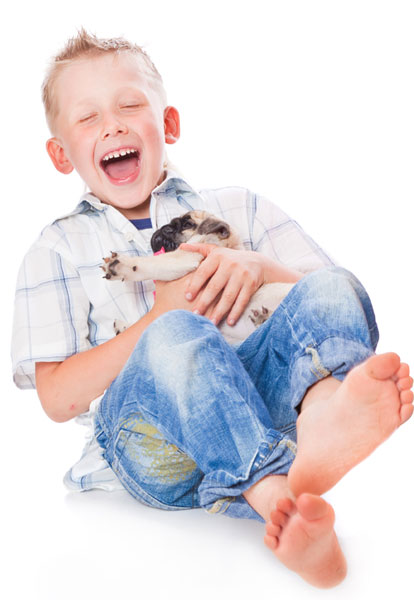If you see this icon in a fact sheet summary you may be dealing with a life threatening issue. Consult a veterinarian immediately.
Use our webform to ask a question or book an appointment

EAR INFECTIONS
Sore ears are common in both dogs and cats. The design of their ear canals allows debris, wax and moisture to accumulate within the ear. This is even more likely in breeds with long, floppy ears. Ears with lots of folds and ears with lots of hair growing in the ear canal are more likely to suffer problems.
A sore ear can be particularly distressing for your pet. And an otherwise easily alleviated problem can turn into something more serious with excessive scratching and head shaking. To determine what is the cause of your pet’s problem it is best to bring them in for an examination as quickly as possible.
There are many things that can cause ear problems, including injuries, bacterial infections, fungal (yeast) infections, grass seeds, dirt or sand, excessive wax production, soap or water in the ear canal, ear mites, allergies and other skin conditions.
SEVERITY: Moderate.
Your dog or cat may show any of the following symptoms…
- Scratching one or both ears
- Smelly ears
- Head shaking
- Head tilted to one side
- A yellow, green, brown, black or cream discharge from the ear
- Painful ears or head when touched
- Redness and inflammation of ear flap and ear canal
- Swelling of ear flap
- Stumbling or circling to one side
- Lethargy and depression.
Because most ear problems show the same signs the ear canal and ear drum have to be examined with an otoscope for us to make a diagnosis. A grass seed in the ear may cause your dog to have exactly the same signs as a bacterial infection so we need to be able to see into the canals to tell the difference. The ear drum must be assessed, as a ruptured ear drum is a much more serious illness which can cause balance problems and inner ear infections. The medication we choose may be altered if the ear drum is ruptured.
Sometimes a smear is taken and examined in our in-house laboratory to check the cause of the problem. Other times a sterile swab is taken to ‘culture’ the bacteria or yeast that are causing the infection, and thus determine the appropriate treatment.
Some dogs that have chronic recurring problems have bacteria or fungi that are resistant to the common ear ointments and drops, and need different formulations to treat the infection. This can only be determined with microbiological culture and sensitivity testing.
Medication, in the form of drops, ear cleaning solutions and tablets, is usually all that is needed to quickly clear up ear problems. It is essential that these treatments are used correctly. Intermittent use of antibiotic solutions can favour the multiplication of resistant bacteria, which is why we always prescribe the drops only for a certain time and recommend a revisit to check the ears at the end of the course. If the ears aren’t 100%, the problem will reoccur once the medication is stopped.
Sometimes more extensive treatment is necessary. An ear that is full of pus may need to be flushed under general anaesthesia to remove as much discharge as possible and assess the ear drum. Or a grass-seed must be removed under sedation or general anaesthesia to prevent rupture of the ear drum.
Home prevention:
There are some things you can do to help prevent ear problems:
Cut the hair around and inside the ear flap short to allow better circulation of air
Get your groomer to pluck the ears regularly to prevent hair falling down into ears.
Use an antibacterial ear cleaner once or twice a week. These protect against a broad range of infections and also dissolves the wax and debris inside the ear and allow the dog to shake it out. It also dries out the ear if your dog has been swimming or water has gone into the ear during a bath.
MORE DISEASES OF DOGS
DOGS: ADVICE FOR EMERGENCIES


